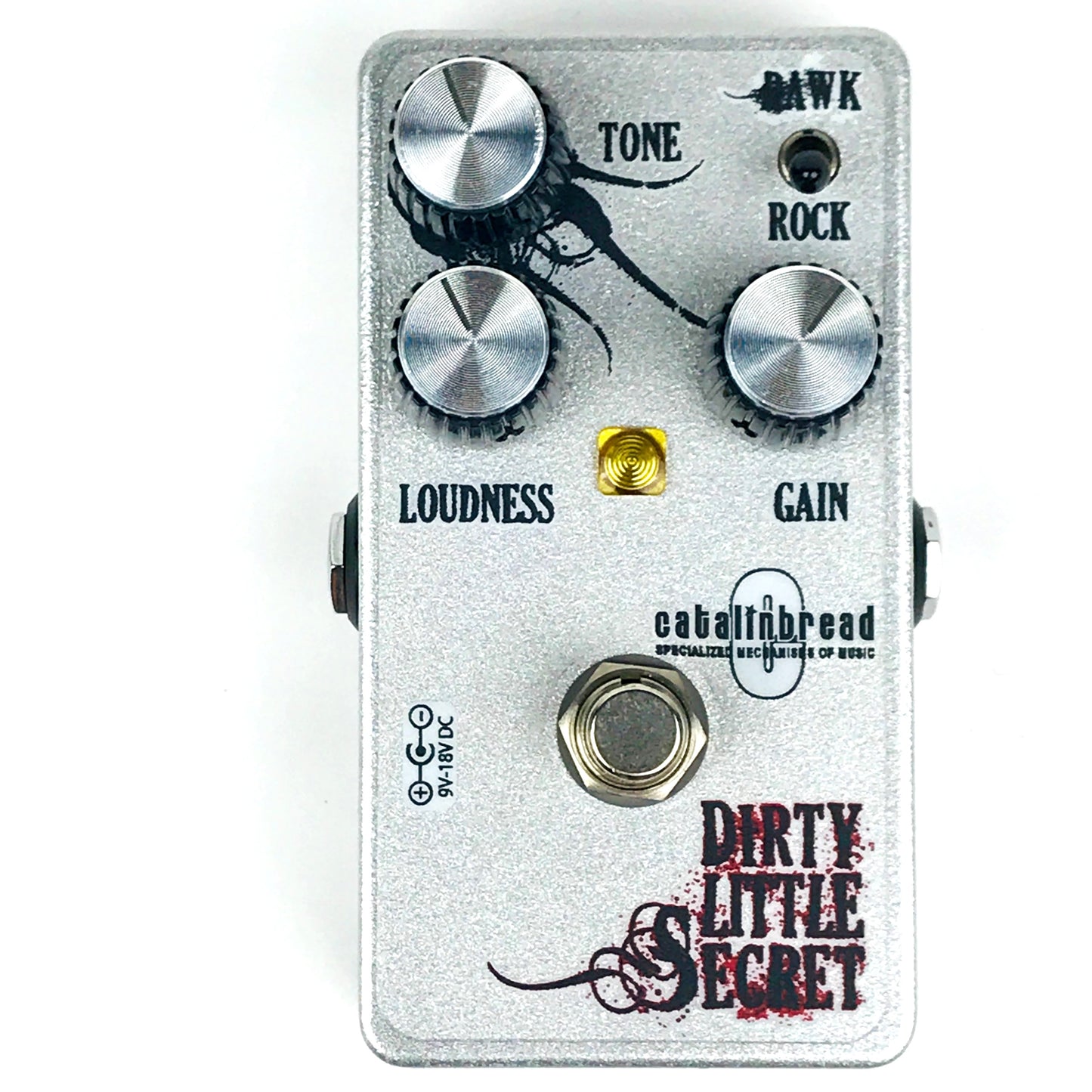Catalinbread Dirty Little Secret mk1, brand new old stock (NOS)
Catalinbread Dirty Little Secret mk1, brand new old stock (NOS)
Couldn't load pickup availability
In essence, the DLS is a foundation pedal, a sonic platform to build the rest of your sound upon. It reacts to your playing dynamics and respects the character of your guitar's pickups just like the classic British amplifiers it emulates. Use it to set your base crunch rhythm sound into a clean amp, roll your guitar's volume back for cleans. Notice how treble boosters sound like shards of brittle glass or how fuzzes sound cheesy & thin into clean amps? The DLS seamlessly integrates treble boosters and fuzzes with clean low volume amps, delivering a thick cranked sound at reasonable volume levels.
What is surprising to people experiencing the DLS for the first time is that we've managed to capture the same dynamic interaction felt between a player and an amp but in a pedal. The DLS cleans up with light picking attack and volume knob changes, it reacts in the same way as those amplifiers do. It crunches when you hit it hard, cleans up when you play softly, and has that punchy cabinet air movement thing happening even at low volume levels. By the same token the DLS respects your guitar's characteristics. The result doesnメt sound like a typical amp in a box pedal because it doesn't feel like you're playing a pedal it feels like an amp.
The controls are simple and effective Loudness governs output, Tone morphs from smooth and fat to crunchy and cutting, Gain goes from clean and clear to full crunch with harmonics, and the Rock/Rawk switch selects 60s - 70s JTM/JMP sounds (Rock) or 80s JCM tones (Rawk).
Since the DLS was designed to emulate two classic British amplifiers, let's get into each mode setting and what they have to offer in variety of sounds.
Rock Mode is your classic 60s - 70s rock sound. Chords are crunchy with lots of string definition and punch; single string playing is more clean than hairy and sounds clear and articulate. Picking dynamics are very apparent since there isn't a ton of gain compressing your signal. The lowend cabinet resonance is at your chest, loose but NOT flabby.
In Rawk mode, you'll notice more gain and a more focused response ヨ chords are thick, single strings have more smoothness and harmonic content. The cabinet feel is still there - tighter and more immediate. Itメs quicker to decay into controlled harmonic feedback too.
Another aspect of the pedal we put a lot of thought into was how it reacts to different power supplies. There are significant differences to be had in tone and playing feel response based on what voltage is used just like if you were running your amp with a Variac. Running the DLS at 18 volts, you'll experience lots of dynamic movement happening Kerrang! - there is a resonance to the sound giving the impression that you are playing through a 4x12 cabinet. At 18V you will get quite a bit more output than at 9V. At 9 volts, the pick attack is a bit more soft and smooth than running it at 18v but there is still plenty of punch and articulation. Using a battery, you'll get a spongier playing feel and creamier sound.
We're really proud of this pedal it took months of critical listening to voice it just right and we think we've nailed it with the DLS. We hope it inspires you to do what you do best make our music!
Share















